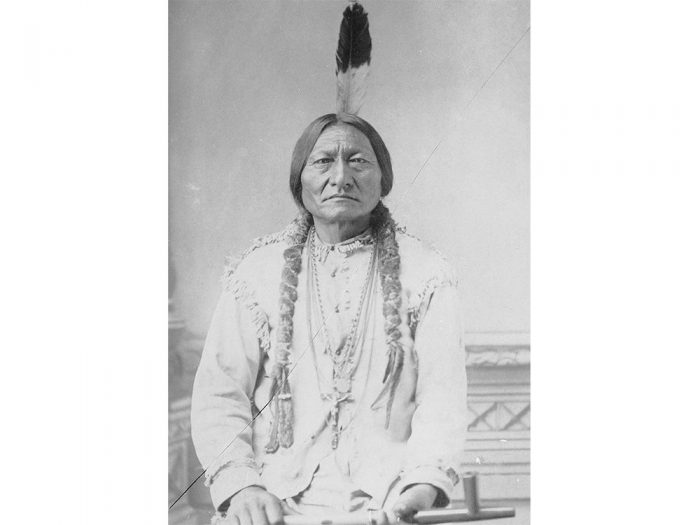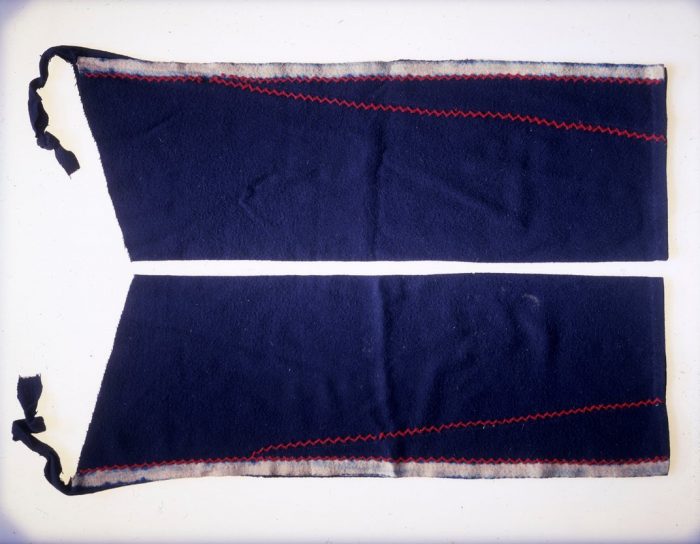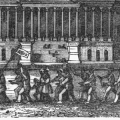New Study Adds to Decade-Old Repatriation of Sitting Bull’s Belongings
The research highlights Smithsonian’s successful repatriation of Sitting Bull’s leggings and lock of hair to his direct descendants

The story of Sitting Bull’s murder in 1890 is infamous. But the story of how his leggings and lock of hair were stolen and loaned to the Smithsonian’s National Museum of Natural History was lost for over 100 years — until the mid-1990s — when museum anthropologists began looking into the loan’s origins to begin the repatriation process.
“No history book ever reported that Sitting Bull’s lock of hair and leggings were taken from his body. Yet, this was revealed in our research,” said Bill Billeck, program manager of the museum’s Repatriation Office. “It was a really important thing for us to find out that this had occurred, so we could give the family some closure.”
Both the hair and leggings were successfully repatriated to Sitting Bull’s family in 2007. Now, a new analysis on a small sample of Sitting Bull’s lock of hair marks the latest update after the museum repatriated the belongings to Sitting Bull’s direct descendants.
“I have four ways I know I’m connected to Sitting Bull,” said Ernie LaPointe, great-grandson of Sitting Bull. “The first is through oral history. The second is the paper trail with all the historical records. The third is through ceremonies where I have connected with my great-grandfather. And the fourth one is now through this study.”

The journey to repatriation
Back in the mid-1990s, museum anthropologists knew they had Sitting Bull’s leggings. But because they did not know how the leggings were acquired, they did not know whether the leggings could be legally repatriated.
Then, in 1997, Billeck learned that Sitting Bull’s lock of hair had been found in the National Anthropological Archives.
“Our records showed the lock of hair and the leggings were on loan from a man with the last name Deeble, but we had no idea who he was,” said Billeck.
His research revealed that Horace Deeble was an U.S. Army Surgeon, who had stolen both leggings and hair from Sitting Bull’s body in 1890. After investigating and consulting with the U.S. Army, Billeck was able to determine that Deeble had no authority to take these items. This meant the museum could legally repatriate the leggings and hair.
Eventually, Billeck connected with LaPointe, who had the necessary documents to prove Sitting Bull was his great-grandfather. His family had no idea that Deeble had taken leggings and hair from Sitting Bull’s body.
“I was kind of shocked,” said LaPointe. “So, we gave Bill all the information we had, including our family tree, and that was the start of our journey to repatriation.”

Exploring family histories
After receiving his ancestor’s leggings and hair, LaPointe held a ceremony to mark the return of the items to his family.
“We did a ceremony with the hair to bring the spirit of my great-grandfather and have him tell us that these are really his items and what we should do with them,” said LaPointe.
In attendance was molecular anthropologist Eske Willerslev, who had contacted LaPointe about analyzing Sitting Bull’s hair to reinforce the family’s connection with their ancestor. After the ceremony, LaPointe gave Willerslev a small sample of the hair to examine.
Now, Willerslev and his colleagues have confirmed that LaPointe and his sisters directly descend from Sitting Bull.
“It shows Ernie LaPointe’s a relative and indeed the lock of hair was genetically similar,” said Billeck. “And we’ve had the records to also make that case strongly.”
By using a new method for analysis, the team was able to extract and test an incredibly small amount of poorly preserved DNA.
“So, this method has value because it only needs a very limited amount of DNA,” said Willerslev, who works at the University of Cambridge and is corresponding author on the paper. “It can still tell us something about the relationships between past people and possible contemporary relatives.”
A slow but essential process
/https://tf-cmsv2-smithsonianmag-media.s3.amazonaws.com/filer_public/f0/a9/f0a95ece-abd9-442a-9005-2b7af8097165/ernie_lapointe_meets_with_bill_billeck_and_the_acting_director_of_the_national_museum_of_natural_history.jpg)
Studying the relationships between past and present people is as intrinsic to modern anthropological research as is repatriation.
“It’s important to us to address the poor history that our nation has had with all Native people,” said Billeck.
Since the museum’s repatriation office was established in 1991, there have been over 141 successful repatriations. These are done under the guidance of the National Museum of the American Indian Act, which came into law in 1989.
“Repatriation is about giving control back of things that were inappropriately taken and giving back the ability to decide what to do with those human remains and objects,” said Billeck.

Abigail Eisenstadt is a Communications Assistant at the Smithsonian’s National Museum of Natural History. She brings science to the public via the museum’s Office of Communications and Public Affairs, where she tracks media coverage, coordinates filming activities and writes for the museum’s blog, Smithsonian Voices. Abigail received her master’s in science journalism from Boston University. In her free time, she is either outdoors or in the kitchen.
This post was originally published by the Smithsonian magazine blog, Smithsonian Voices. Copyright 2021 Smithsonian Institution. Reprinted with permission from Smithsonian Enterprises. All rights reserved. Reproduction in any medium is strictly prohibited without permission from Smithsonian Institution.
Posted: 15 November 2021
-
Categories:
Collaboration , History and Culture , Natural History Museum







